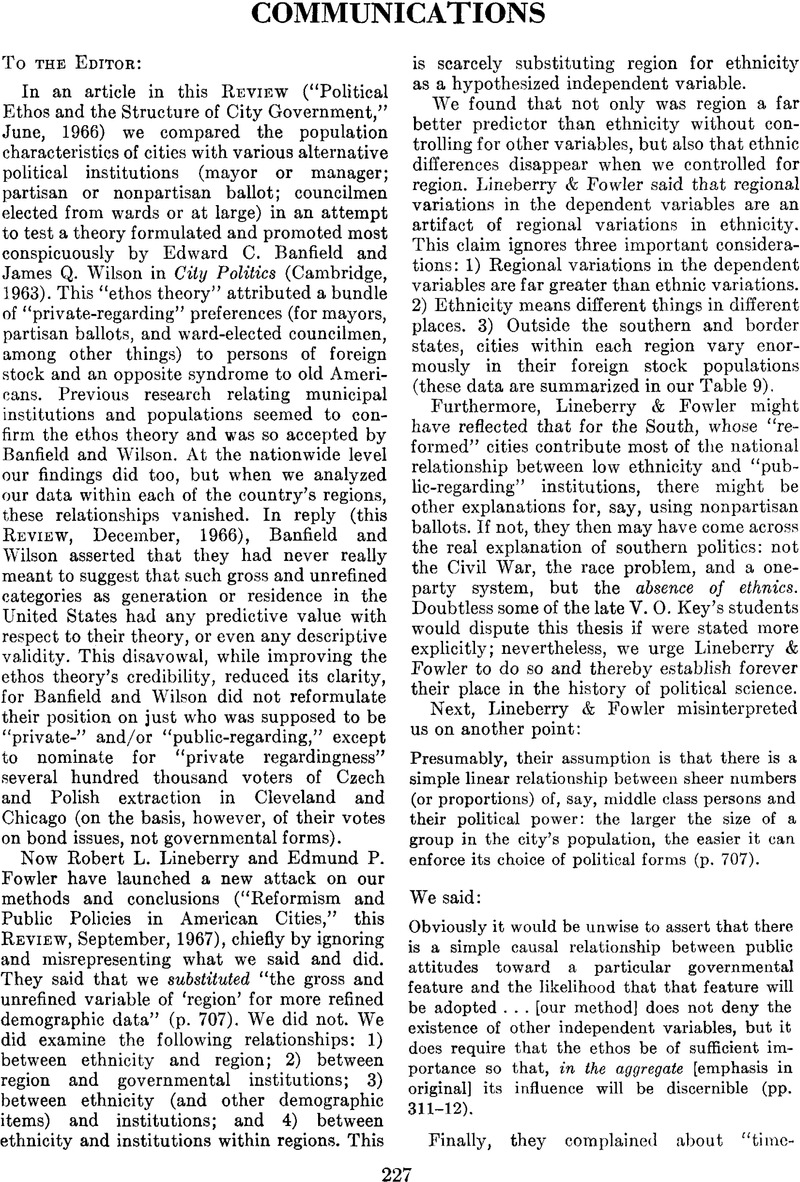Article contents
Communications
Published online by Cambridge University Press: 01 August 2014
Abstract

- Type
- Communications
- Information
- Copyright
- Copyright © American Political Science Association 1968
References
page 227 note 1 In a four-page passage from Richard E. Dawson and James A. Robinson's “The Politics of Welfare” that they cited for another purpose, Lineberry & Fowler evidently overlooked this sentence: “The rank-order correlation between the 1941 and 1960 indices [for states] of … per cent of foreign born or per cent with one or more foreign-born parents is .97.” See Jacob, Herbert and Vines, Kenneth N. (eds.), Politics in the American States (Boston, 1965), p. 401.Google Scholar
page 229 note 2 Ibid., pp. 398–401. A complete reading of the Dawson & Robinson article would have revealed another problem: the proportion of total state welfare expenditures contributed by local governments ranges from zero to more than a third. A glance at the relevant table (pp. 382–383) reveals pronounced regional patterns in this respect. Lineberry & Fowler alluded to the problem of expenditure allocation, but dismissed it quickly: “We think it important, however, that our independent variables explain a large proportion of the variation in municipal outputs as we measured them. No doubt one could explain an even larger proportion of the variation in measures which specify different functional responsibilities of cities” (p. 704n). On the other hand, of course, this more accurate specification might reduce rather than increase the proportion of the variance.
page 230 note 1 Unfortunately, Dawson and Robinson's data are not much help here, since (1) states are not cities; and (2) 1940 was hardly the peak year for either the size of ethnic groups in cities, or the adoption of reforms.
page 231 note 2 “In Child's schema, the interest group is anathema to the public interest and should be expunged from the body politic.” East, John P., Council-Manager Government: A Biographer of its Founder, Richard S. Childs (Chapel Hill, 1965), p. 96.Google Scholar
- 1
- Cited by



Comments
No Comments have been published for this article.